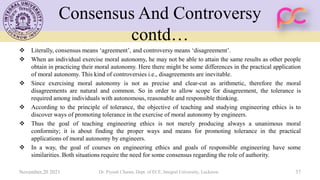The Ethics Of Reverse Engineering: Exploring The Controversies

Reverse engineering is the process of deconstructing a product to understand its design, functionality, and principles of operation. It involves analyzing and disassembling the product to derive its underlying concepts, techniques, and components. While reverse engineering has legitimate applications in various fields, it has also raised ethical concerns and sparked controversies.

Is Reverse Engineering Legal?

The legality of reverse engineering varies across jurisdictions and depends on specific laws and regulations. In some countries, it is considered legal as long as it is done for non-commercial purposes, such as research, analysis, or education. However, reverse engineering may be deemed illegal if it involves unauthorized access to trade secrets, patented inventions, or copyrighted works.
Arguments for Reverse Engineering
Proponents of reverse engineering argue that it can drive innovation by allowing competitors to learn from existing products, identify areas for improvement, and create new and improved versions. They also contend that reverse engineering fosters a knowledge-sharing culture, promotes open innovation, and enables interoperability between products from different manufacturers.
Arguments against Reverse Engineering
Opponents of reverse engineering raise concerns about intellectual property rights. They argue that unauthorized reverse engineering violates patents, copyrights, and trade secrets, thereby undermining the incentives for innovation and creativity. Critics also argue that reverse engineering can lead to counterfeit products, dilution of brand identity, and unfair competition.
Balancing Interests: The Case for Responsible Reverse Engineering
To address the ethical concerns surrounding reverse engineering, the concept of responsible reverse engineering has emerged. This approach advocates for fair and ethical practices that respect intellectual property rights while promoting innovation and knowledge sharing. Responsible reverse engineering involves:
- Respecting patents, copyrights, and trade secrets: Reverse engineering should not involve unauthorized access to protected intellectual property.
- Clear communication and transparency: Reverse engineers should disclose their intentions and avoid misleading consumers or businesses.
- Attribution and recognition: Reverse engineers should acknowledge and give credit to the original creators of the products they analyze.
- Non-commercial use: Reverse engineering should primarily be limited to non-commercial purposes, such as research, analysis, or education.
By embracing responsible reverse engineering practices, stakeholders can strike a balance between protecting intellectual property rights and fostering innovation, thereby promoting a healthy and ethical ecosystem that benefits all parties involved.## The Ethics Of Reverse Engineering: Exploring The Controversies
Executive Summary:
Reverse engineering, the process of analyzing a product to understand its design and functionality, has emerged as a critical practice in the modern era of innovation. This practice often sparks ethical debates due to its potential implications. This article delves into the ethical controversies surrounding reverse engineering, examining its potential benefits, concerns, and legal implications. We explore the arguments for and against this practice and offer insights into the complex ethical considerations it raises.
Introduction:
Reverse engineering, or the process of deconstructing a product or system to understand its inner workings, has become a cornerstone of technological advancement. It allows engineers and researchers to dissect existing inventions to gain valuable insights, modify and improve existing products, and stimulate innovation. However, this practice does not come without ethical concerns. The potential for intellectual property infringement, violation of trade secrets, and the implications for fair competition raise questions about the boundaries of ethical reverse engineering.
Understanding The Ethical Controversies of Reverse Engineering:
1. Intellectual Property Infringement and Copyright Concerns:
-
Copyright Violation: Reverse engineering can be viewed as a breach of copyright laws, as it involves the unauthorized reproduction or adaptation of a protected work, potentially infringing on the rights of the original creator. The unauthorized use or distribution of copyrighted material raises concerns about the violation of intellectual property rights.
-
Trade Secret Misappropriation: When reverse engineering involves the unauthorized acquisition and disclosure of confidential information, it poses the risk of trade secret misappropriation. Companies often invest considerable resources in developing and safeguarding proprietary knowledge, and reverse engineering might lead to the unauthorized disclosure of such trade secrets.
2. Patent Infringement and Innovation Disincentives:
-
Patent Violation: Reverse engineering can potentially lead to the creation of products or technologies that infringe on existing patents. If a new product or process derived from reverse engineering infringes on a valid patent, it could result in patent infringement lawsuits, legal penalties, and injunctions against the offending party.
-
Disincentivizing Innovation: Critics argue that the threat of reverse engineering could discourage companies from investing in research and development, fearing that their innovations might be easily copied, undermining their competitive advantage and financial returns. This could have a chilling effect on innovation if companies become hesitant to invest in groundbreaking ideas.
3. Safety and Liability Concerns:
-
Liability Issues: If a product derived from reverse engineering is found to be defective and causes harm, the original manufacturer may face product liability lawsuits even if they were not directly involved in the design or manufacturing of the defective product. This arises from the concern that reverse engineering might have compromised the original design and safety features.
-
Consumer Protection: Reverse engineering, when done unethically, may lead to the creation of inferior products that do not meet the standards or safety regulations. Consumers might be exposed to hazardous products or products that fall short of their expected performance and quality, compromising their safety and trust.
4. Fair Competition and Competitive Advantage:
-
Unethical Competitive Advantage: Reverse engineering, if employed unethically, may allow competitors to gain an unfair advantage by accessing and exploiting the proprietary knowledge of other companies. This can lead to the creation of copycat products or services, undermining the efforts, resources, and investments made by the original innovators.
-
Ethical Reverse Engineering: On the other hand, some argue that ethical reverse engineering can foster fair competition by allowing competitors to study and improve existing products, driving progress and innovation. It can encourage the creation of more efficient and affordable alternatives that benefit consumers.
5. Social and Environmental Concerns:
-
Environmental Impact: Reverse engineering can be used to analyze products from a sustainability perspective, identifying ways to reduce their ecological footprint and overall resource consumption. By dissecting existing technologies, engineers might gain insights into designing more environmentally friendly alternatives.
-
Social Responsibility: Reverse engineering can prompt companies to scrutinize their products and address potential social and ethical issues. By understanding the inner workings of a product, manufacturers can identify areas where they can improve labor practices, reduce environmental harm, and address social concerns related to their products or services.
Conclusion:
The ethics of reverse engineering encompass a complex interplay of intellectual property rights, fair competition, innovation, safety, and social responsibility. Ethical practices during reverse engineering involve respecting intellectual property rights, ensuring patent compliance, prioritizing consumer safety, promoting healthy competition, and fostering sustainability. Striking a balance between the benefits of reverse engineering for innovation and the protection of intellectual property remains an ongoing challenge. As technology continues to advance, the legal and ethical considerations surrounding reverse engineering will undoubtedly evolve, requiring adaptable and nuanced approaches to ensure responsible and ethical practices.
Keyword Phrase Tags:
- Reverse Engineering Controversy
- Ethical Implications of Reverse Engineering
- Intellectual Property and Reverse Engineering
- Legal Aspects of Reverse Engineering
- Innovation and Reverse Engineering

This is a very well-written article on the ethics of reverse engineering. It provides a comprehensive overview of the ethical issues involved in this practice, and it does so in a clear and concise manner. I highly recommend this article to anyone who is interested in learning more about the ethics of reverse engineering.
I found this article to be very informative. It provided me with a lot of new information about the ethics of reverse engineering. However, I do not agree with all of the author’s conclusions. I believe that reverse engineering can be a valuable tool for innovation, and that it should not be restricted in all cases. For example, reverse engineering can help developers improve the security or software, and it can also help them develop new products and services.
This article raises some important ethical issues that need to be considered when engaging in reverse engineering. I agree with the author that reverse engineering can be a valuable tool, but it is important to use it responsibly. I would like to add that it is also important to consider the legal implications of reverse engineering. In some cases, reverse engineering may violate copyright or patent laws. It is important to do your research before engaging in reverse engineering to make sure that you are not breaking any laws.
I believe that the author of this article takes too narrow a view of the ethics of reverse engineering. He argues that reverse engineering is only ethical if it is done for the purpose of security research or to improve the interoperability of software. I believe that reverse engineering can also be ethical if it is done for the purpose of creating new products and services. For example, reverse engineering can be used to develop new software that is compatible with existing software, or to create new products that are based on existing products.
Oh, please! The author of this article is acting like reverse engineering is some kind of terrible crime. It’s not like you’re stealing a car or anything. All you’re doing is taking something apart to see how it works. Get over it.
I’m not sure why everyone is getting so worked up about reverse engineering. It’s just a way to learn how things work. It’s like taking apart a toy to see what’s inside. Except, with reverse engineering, you’re taking apart software instead of toys. And instead of finding out what makes a toy work, you’re finding out what makes the software work. It’s all just a lot of fun.
In addition to the ethical issues discussed in the article, there are also a number of legal issues that need to be considered when engaging in reverse engineering. In some cases, reverse engineering may violate copyright or patent laws. It is important to do your research before engaging in reverse engineering to make sure that you are not breaking any laws. There are a number of resources available online that can help you to understand the legal implications of reverse engineering.
I agree with the author that reverse engineering can be a valuable tool for innovation. However, I believe that it is important to use it responsibly. I would like to add that it is also important to consider the potential risks of reverse engineering. For example, reverse engineering can be used to create malware or to steal intellectual property.
Oh, please! The author of this article is acting like reverse engineering is some kind of terrible crime. It’s not like you’re stealing a car or anything. All you’re doing is taking something apart to see how it works.
I’m not sure why everyone is getting so worked up about reverse engineering. It’s just a way to learn how things work. It’s like taking apart a toy to see what’s inside. Except, with reverse engineering, you’re taking apart software instead of toys.
This article provides a good overview of the ethical issues involved in reverse engineering. However, I would like to add that it is also important to consider the legal implications of reverse engineering. In some cases, reverse engineering may violate copyright or patent laws.
I agree with the author that reverse engineering can be a valuable tool for innovation. However, I believe that it is important to use it responsibly. I would like to add that it is also important to consider the potential risks of reverse engineering.
This article is a great example of how to take a complex topic and make it accessible to a general audience. The author does a good job of explaining the ethical issues involved in reverse engineering, and he provides a balanced perspective on the topic.